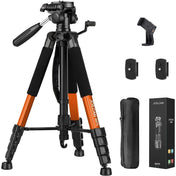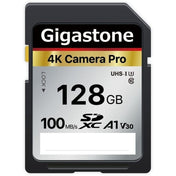The realm of photography has undergone a transformative journey, transitioning from the traditional film-based cameras to the remarkable digital devices that dominate the market today. This evolution not only revolutionized the way we capture moments but also paved the way for numerous innovations – including the emergence of the portable photo printer. In this exploration, we will delve into the significant milestones in camera technology and how they've shaped photography as we know it.
The Beginnings: Film Cameras
The history of photography began in the early 19th century, and the film camera played a pivotal role in that era. The first successful image was captured in 1826 by Joseph Nicéphore Niépce using a process known as heliography. This marked the beginning of capturing and preserving images. However, it wasn't until the late 1800s that film cameras became more accessible to the public, thanks largely to Kodak’s introduction of roll film in 1888.
Key Features of Film Cameras
- Physical Film: Film cameras utilized photographic film, a light-sensitive medium that captured images when exposed to light.
- Manual Operation: Many film cameras required manual settings for exposure and focus, making photography an art of precision.
- Development Process: Each shot taken needed to be developed through a chemical process, which could be time-consuming and costly.
Despite these challenges, film photography allowed individuals and professionals alike to express creativity and document their lives. The physicality of film also created a unique charm, leading to an appreciation for the craft and the anticipation of development.
The Shift: The Arrival of Digital Cameras
The late 20th century heralded a dramatic shift in photography with the advent of digital cameras. The first digital camera was invented in 1975 by Steven Sasson, an engineer at Kodak. This groundbreaking technology revolutionized how images were captured, stored, and shared. By the early 2000s, digital cameras started to gain popularity, and many photographers began to transition from film to digital.
Advantages of Digital Cameras
- Instant Gratification: The ability to view images immediately after capturing them marked a major shift in photography. No more waiting for film to be developed.
- Storage Capacity: Digital formats allowed photographers to store hundreds, even thousands, of images on a single memory card.
- Editability: The rise of digital photography introduced advanced editing software, enabling photographers to enhance images seamlessly.
As digital cameras became more prevalent, the craft of photography evolved with them. New genres emerged, and accessibility to photography encouraged an explosion of creativity among enthusiasts and professionals alike.
The Role of Smartphones in Photography
In the midst of this digital revolution, smartphones emerged as another significant player in the photography landscape. Beginning in the late 2000s, smartphones integrated powerful cameras into compact devices, making photography more accessible than ever before. This convenience transformed how people documented their lives and shared experiences with others.
Smartphone Features Influencing Photography
- High-Quality Lenses: Advancements in lens technology allowed smartphones to capture stunning images, rivaling dedicated cameras.
- Built-In Editing Tools: Numerous apps provided in-device editing capabilities that enhanced the sharing experience.
- Social Media Integration: Instant sharing capabilities have made smartphones essential tools for capturing and sharing moments with a global audience.
Smartphones bridged the gap between casual snapshots and serious photography, allowing anyone to explore their passion for capturing moments on the go. Thanks to smartphones, the world became filled with a plethora of images, leading to new social dynamics and trends in visual storytelling.
The Innovation of Portable Photo Printers
With the rise of digital photography and smartphones, the need for tangible prints remained relevant. Enter the portable photo printer – a revolutionary device that allows users to print photos directly from their smartphones or digital cameras. These compact printers became highly sought after, perfectly fitting into the modern lifestyle of instant sharing and connectivity.
The Appeal of Portable Photo Printers
- Convenience: Lightweight and easily transportable, portable photo printers make it simple to create physical copies of cherished memories anywhere.
- Creative Outputs: They enable users to print photos in various sizes and formats, enhancing the creative possibilities for personal projects and gifts.
- Instant Satisfaction: Just like digital photography, these printers allow users to print images instantly, preserving memories on the spot.
Portable photo printers have made it possible for photographers to maintain a tangible aspect of their work, reinforcing the notion that prints continue to hold value in our increasingly digital world. Whether it’s at a family gathering, a night out with friends, or during events, instant prints provide an entirely new experience for sharing memories.
The Transition to Mirrorless Cameras
The shift from film to digital wasn’t just about changes in technology; it also marked a shift in camera design and functionality. Enter mirrorless cameras – a significant innovation that changed the landscape of photography once again. Mirrorless designs eliminate the bulky mirrors of traditional DSLRs, making these cameras lighter and more compact while providing superior image quality.
The Benefits of Mirrorless Technology
- Compact Size: Lighter and more portable than traditional DSLRs, mirrorless cameras are ideal for photographers on the move.
- Faster Shooting Speeds: With no mirrors to flip, these cameras can shoot at higher speeds, capturing fleeting moments with accuracy.
- Real-Time Exposure Preview: Advanced electronic viewfinders provide real-time previews, improving user experience and shooting confidence.
As technology continues to evolve, the demand for efficient and high-performing camera systems has led many photographers to embrace mirrorless options for their versatility and performance. Each innovation in camera technology has transformed photography in its way, leading to an increasingly diversified market.
The Future of Photography
As we look towards the future, it's important to consider how advancements in technology will continue to shape the photography landscape. Emerging trends like artificial intelligence, augmented reality, and computational photography are poised to revolutionize how we capture and experience images.
Trends to Watch
- Smart Cameras: Cameras equipped with AI features that enhance user experience by automatically adjusting settings and improving image quality.
- Augmented Reality: The possibility of integrating AR in photography could create immersive experiences that change the way we view and interact with images.
- Advanced Imaging Technologies: Innovations like 3D imaging and virtual reality photography that could take storytelling to a new dimension.
The future of photography appears bright and promising. As technology evolves, photography can only become more accessible, creative, and engaging. And within this future landscape, the role of creative tools like the portable photo printer remains vital, providing an essential connection to the tangible aspect of photography.
Capturing Memories for Generations to Come
Photography has come a long way from its humble beginnings in the 19th century. From the days of film cameras, through the rise of digital technology, smartphones, and the advent of portable photo printers, every step has reshaped the way we capture and share our lives. Though the technology has evolved, the core essence of photography remains unchanged – to document moments, tell stories, and preserve memories that can last a lifetime.
With the continuous evolution of camera technology, one thing is clear: photography will always be an integral part of human expression and connection. Embrace this journey, explore your creativity, and keep capturing those special moments, because every photograph tells a story worth sharing.











